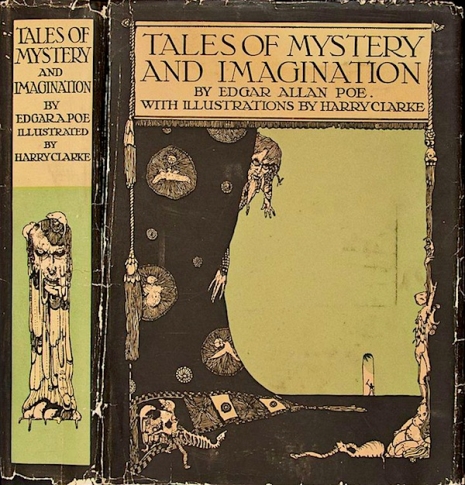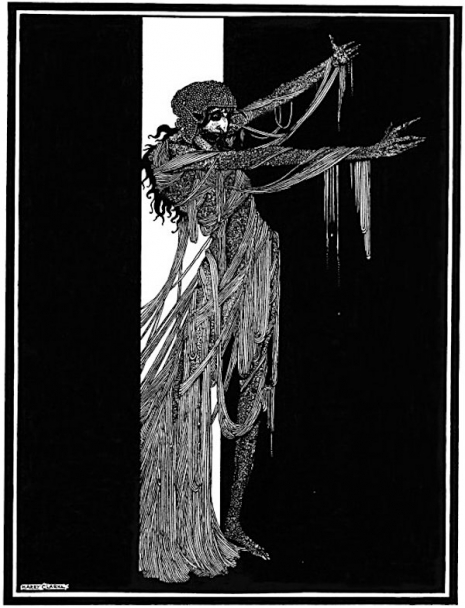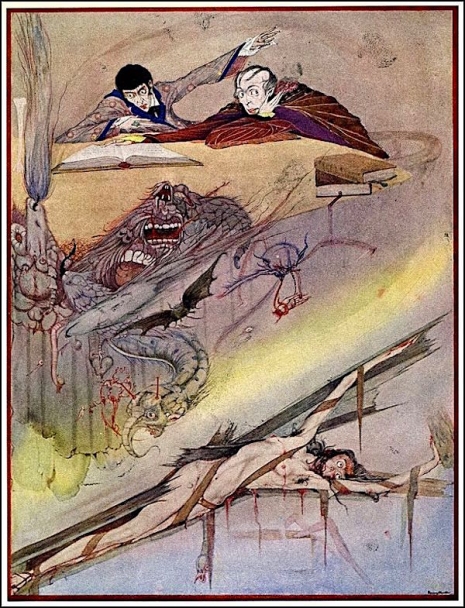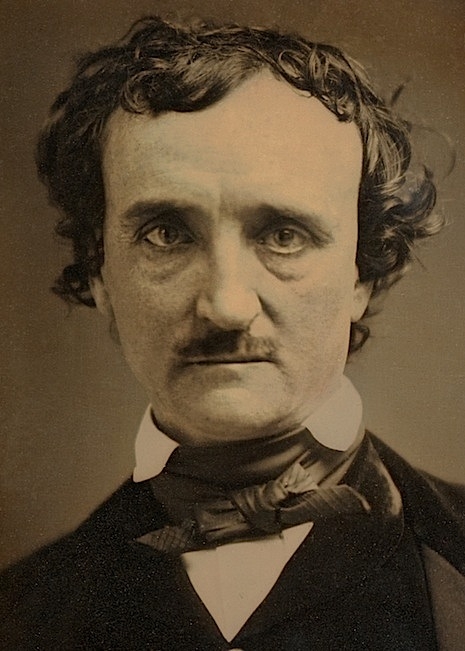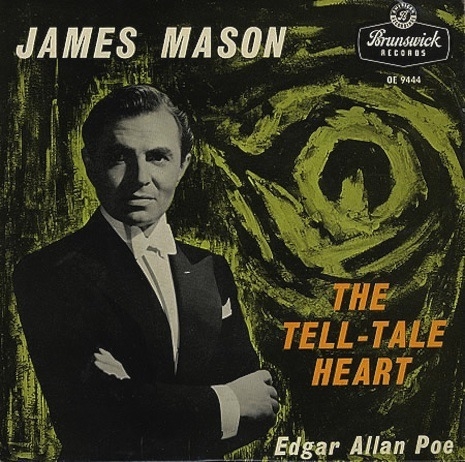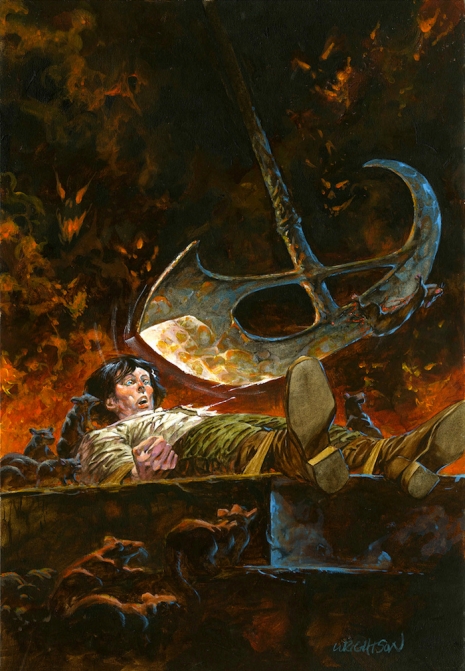
In 1976, legendary comic book artist Bernie Wrightson produced a series of paintings for a limited edition set of prints featuring key scenes from the tales of Edgar Allan Poe. The portfolio consisted of eight prints and was limited to an edition of 2000. Most of these prints were signed by Wrightson, who was then still using the first name “Berni” so as not to be confused with the Olympic gold medalist diver Bernie Wrightson.
For the series, Wrightson produced eight paintings. However, the first painting for “The Pit and the Pendulum” (above) proved to be too bright and could not be used by the printers as the thick impasto paint caused considerable glare. Wrightson replaced the image with a darker far more atmospheric picture. It is noticeable that the prints have a slightly darker less vibrant appearance than their original paintings.
Also, unlike some artists who have elaborately illustrated Poe’s classic tales in dark, gothic, monochromatic tones, Wrightson’s work has a dynamic, comic book style that brings Poe’s characters and their actions alive. Best known as the co-creator of Swamp Thing, Wrightson produced an enviable catalog of work during his life, including a series of rare and much sought after illustrations for Mary Shelley’s Frankenstein and the suitably-thrilling artwork for Stephen King’s The Cycle of the Werewolf.

‘The Pit and the Pendulum’: ‘I saw clearly the doom which had been prepared for me…’

‘Murders In The Rue Morgue’: ‘As the sailor looked in, the gigantic animal had seized Madame L’Espanaye by the hair…’
More classic Wrightson artwork for Edgar Allan Poe, after the jump…






